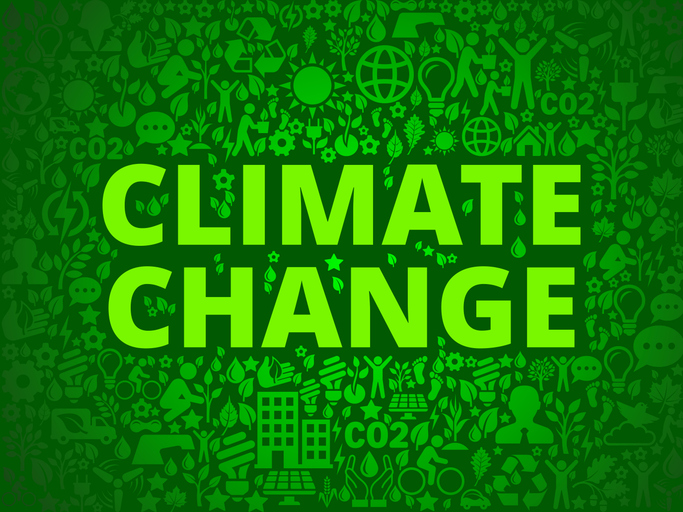Carbon pricing is increasingly recognized worldwide as a powerful tool to combat the devastating impacts of climate change. But what exactly is it, how does it work and where does India stand? Let’s explore this transformative approach to driving a greener and more sustainable future.
Carbon pricing is a policy mechanism that puts a financial cost on greenhouse gas emissions. This policy tool is primarily aimed at discouraging emitters of the greenhouse gas especially carbon dioxide and encouraging individuals, industries and other stakeholders to reduce such emissions to save the mother earth, as climate change is causing a great deal of damage in almost every part of the world, which appears irreparable in several cases.
Driven largely by the excessive emission of greenhouse gases like carbon dioxide, climate change is increasingly posing a critical threat to global ecosystems, economies and societies. In the process, one of the most effective tools developed to mitigate these emissions is carbon pricing. This mechanism mandates to internalize the environmental damage caused by pollution, thus encouraging industries and consumers to reduce their carbon footprint.
To understand it lucidly, carbon pricing is an economic strategy designed to reduce global warming. It reflects the cost of carbon emissions in the market, encouraging emitters to either reduce their emissions or pay for the same. In simple terms, it is a kind of financial penalty imposed on the release of carbon dioxide into the atmosphere by the people, industries or other stakeholders.
There are two primary forms of carbon pricing- carbon tax and cap-and-trade. Each of these mechanisms puts a price on carbon, but in different ways. While, carbon tax directly sets a price on carbon by defining a tax rate on greenhouse gas emissions or more commonly on the carbon content of fossil fuels, making it easier for businesses to plan future investments.
Besides, carbon tax is imposed by the government on on fossil fuels like coal, oil and gas based on their carbon content. The higher the emissions associated with a fuel, the higher the tax, making high emission fuels more expensive, thus encouraging a shift towards cleaner energy sources. For example, Sweden has one of the highest carbon taxes in the world, set at around $130 per tonne of CO₂. The country has reduced carbon emissions significantly while maintaining economic growth since its adoption of the mechanism in 1991.
On the other hand, under Cap-and-Trade or Emissions Trading System (ETS), the government sets a total cap on emissions and distributes or auctions emission permits to emitters. Companies can buy and sell these allowances, creating a market for carbon emissions. Without doubt, a cap limits total emissions for a group of industries or the entire economy.
In this system, companies receive or purchase allowances representing the right to emit a specific amount of CO2, and if a company emits less than its allowance, it can sell the surplus to other companies. Similarly, if a company exceeds the allowance level, it must buy more. Here, it is interesting to note that the cap doesn’t remain fixed, but is gradually reduced over time to decrease total emissions.
The European Union emissions trading system is the largest and most established cap-and-trade system, as it covers more than 11,000 power plants and factories across Europe and is a cornerstone of the EU’s climate policy.
However, a number of countries worldwide have adopted carbon pricing mechanisms including those in Europe. Canada, China, Japan, South Korea, USA, New Zealand, Britain, South Africa, Mexico, Kazakhstan, Singapore, Colombia, Ukrain, Indonesia, Vietnam and a few others have already adopted different mechanisms. The pioneers in the process are Sweden and Finland. While Sweden introduced it in 1991, Finland was the first country to introduce a carbon tax in 1990.
While, the impacts of climate change are widespread, serious experienced across the globe, the trends to contain it through carbon pricing mechanisms are also encouraging. According to estimates, as of now, carbon pricing mechanisms cover about 23% of global greenhouse gas emissions. The total global value of carbon pricing instruments in operation exceeds $100 billion annually.
At the same time, there is a growing push for international coordination, especially through article 6 of the Paris Agreement, which allows countries to trade emissions reductions. Thus, the carbon market has grown rapidly in the past decade, fueled by increased climate commitments under the Paris Agreement and the development of regional and national carbon pricing mechanisms.
To know more about how different countries of the world are responding to these initiatives, we can approach to the World Bank’s Carbon Pricing Dashboard, which provides a comprehensive overview of carbon pricing initiatives worldwide, including their design, coverage and price levels. The World Bank report on the trends of carbon pricing also shows a significant increase in the number of operational carbon pricing instruments and highlights the growing trend of carbon pricing globally.
In recent years, especially since Narendra Modi government came at the Centre, India has also been rapidly advancing toward a structured and regulated carbon pricing ecosystem. It is a part of India’s broader climate and sustainable development agenda.
Amid the growing global focus on carbon markets and emissions trading, India is taking significant steps toward establishing a rate-based Emissions Trading System (ETS) along with complementary voluntary carbon credit mechanisms. The World Bank’s ‘State and Trends of Carbon Pricing 2025’ report highlights India’s expanding role as a key emerging economy shaping the future of global climate finance and carbon pricing architecture.
Rate-based ETS refers to a system where total emissions are not capped but individual entities are allocated a performance benchmark that serves as a limit on their net emissions. Rate-based ETSs offer additional flexibility in managing future growth uncertainty as well as international competitiveness concerns.
India’s Carbon Credit Trading Scheme (CCTS) is a strategic initiative aimed at reducing greenhouse gas emissions through carbon pricing. It comprises two main components- a compliance mechanism for obligated entities, especially for the industrial sector and an offset mechanism to enable voluntary participation.
The scheme being worked out in India, is designed to incentivize and support efforts toward decarbonizing the Indian economy. By establishing the necessary institutional framework, the CCTS has laid the groundwork for the development of the Indian Carbon Market (ICM).
It’s heartening to note here that carbon pricing is no longer a niche policy meant for only rich countries, now it has become a mainstream tool for climate action worldwide including India and other developing countries. Whether through carbon taxes or emissions trading systems, countries are finding ways to internalize the environmental costs of carbon and transition toward a low-carbon future, which augur well for the future of the planet.










